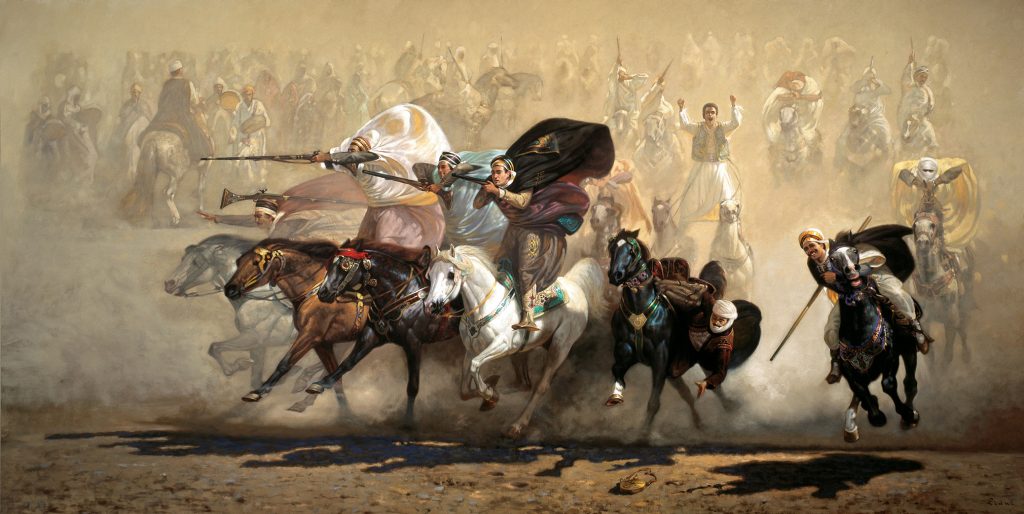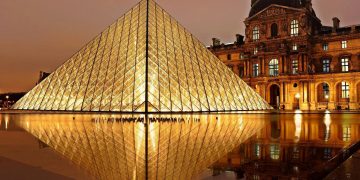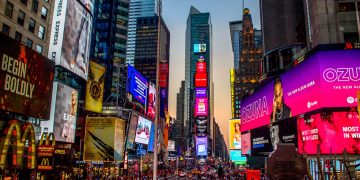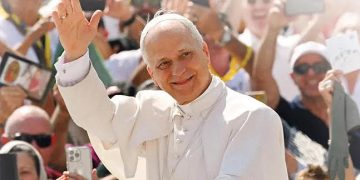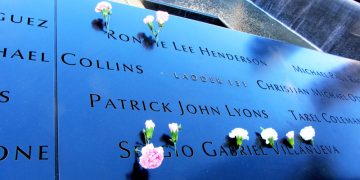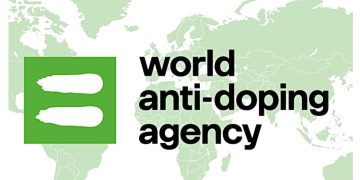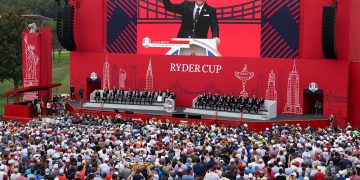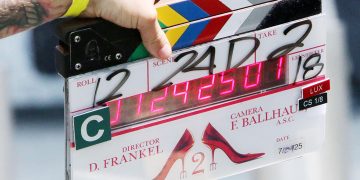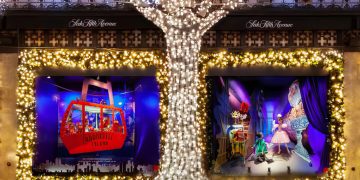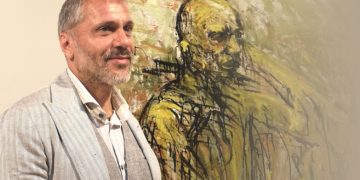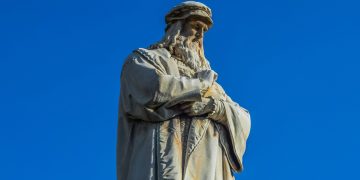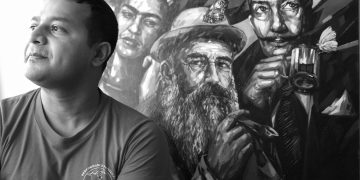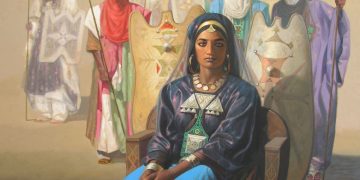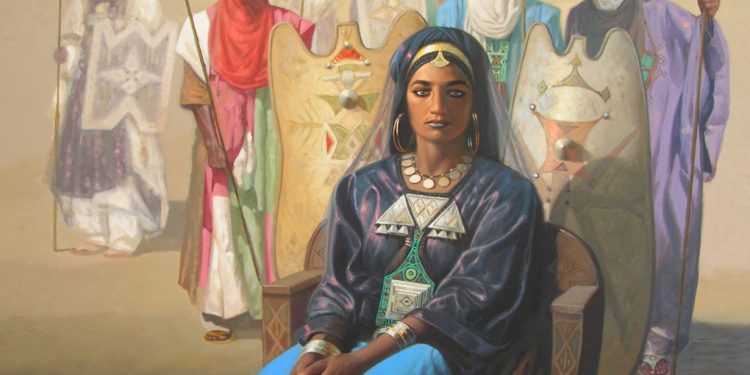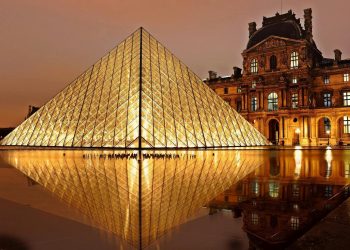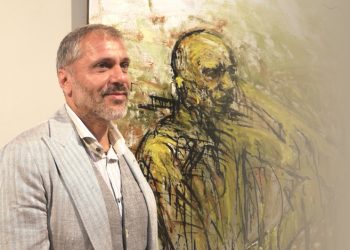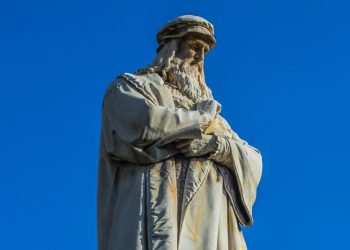HOUCINE ZIANI
I have always painted the same way I started at the beginning, since I was a child.
To paint correctly, that was my leitmotif.
I was just enjoying myself without worrying about what others would think.
G.F.B: What is the artistic particularity that you have adopted to embody your works in order to communicate your passion to those who are passionate about art?
HZ: I didn’t purposely adopt a particular artistic style to make my way. I have always painted the same way, I started at the beginning, since I was a child. To paint correctly, that was my motif . I was just indulging myself without caring about what others would think. I didn’t have a strategy, I just wanted to be myself. The public comes to the artist if the work of the latter is of aesthetic quality, regardless of the genre or school in which it is enrolled. Then, of course, we add artistic originality, stylistic innovation and the subject matter. This is what makes an artist stand out among art enthusiasts. What motivates an artist most is to move forward and build an audience with the passion he has within him. This is what makes his authenticity and this is what drives him to create and assert himself. The artist does not create with the primary intention of pleasing or making others happy. He does it first for himself, out of an often pressing need. He responds to his emotions in front of what amazes him or what moves him, in a positive or negative way. He is curious to see the still unexplored part of the world by himself. This is his first muse. Once the work has been created, he shares it with others.
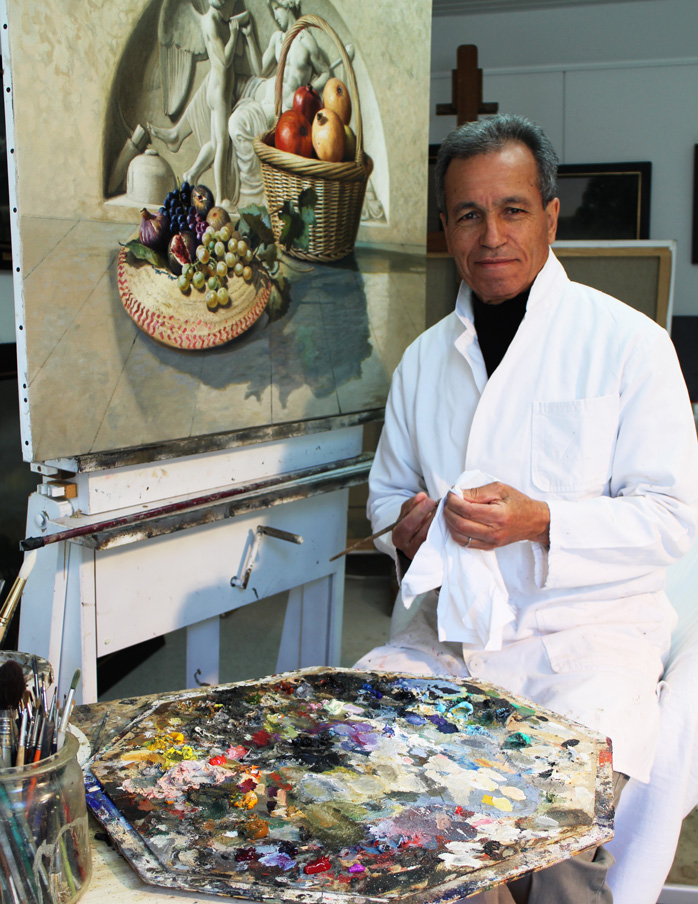
G.F.B: Each of your works of art has become an icon of past and present stories. What is the secret of your inspiration?
HZ: There is no secret. It’s simple. My painting is figurative and therefore accessible to understanding. It is conventional writing, I would say universal, if it deals with subjects touching human history, it challenges even more. it is true that much of my work finds its inspiration in historical subjects, in which many people identify with them. I have dealt with unifying themes, such as subjects drawn from the history of religions or national heritages. I had the privilege of illustrating the national history of my country, Algeria. This pictorial production, which lasted about ten years, now reflects the historical past of an entire people. It is natural and human that people look at these works as if they were looking in a mirror reflecting their past.
G.F.B: Arts schools have personalities who have known various fortunes. What are the factors that brought artist Ziani’s work to this fame?
HZ: Behind all success, there is long term hard work. You can’t build anything without serious work, willpower and a lot of sacrifice are the only guarantees of success. If you have the gift and live your passion deeply, everything will end up culminating in consecration. Also, I can add this: the larger the windows facing the outside, the more light that enters through.
G.F.B: Realism and Abstraction are both linked to each other … Which one comes closest to the integrity of your work, to immerse in the history of civilizations?
HZ: Between realism and abstraction, there is a whole world, diverse and rich in schools and styles. Some approach and others move away from the two extremes. It is obvious that my work approaches realism, without however being completely inspired by reality. I am not a realistic painter, nor abstract either. I am this painter who has the soul of a poet and who paints the poetry of visible things. It is my childish side that still allows me to dream and marvel at sometimes simple things.
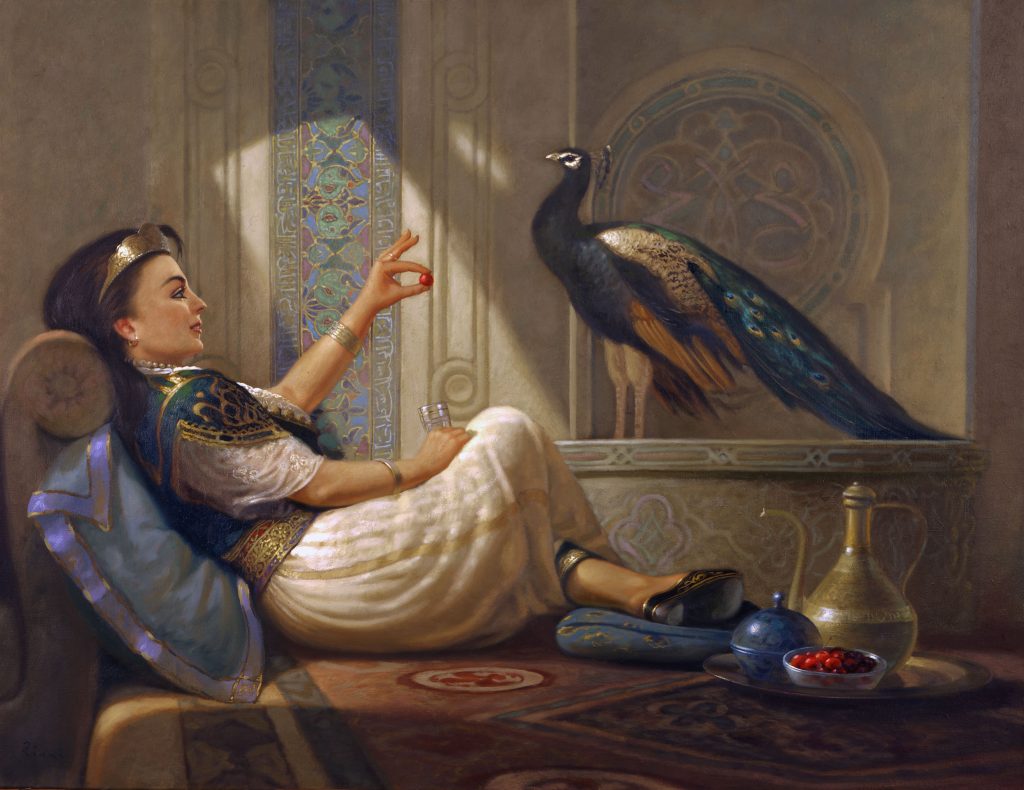
G.F.B: What are the works that have taken you the longest to find their place among art lovers, and which have obtained international awards?
HZ: My inspiration repertoire is wide, it includes a variety of themes. This thematic richness allowed me to reach a large audience. It is true that from one country to another the taste differs. A work can be very successful in one country and not at all in another. But in the same country there are two audiences, if I may say so, there is one with a regionalist taste and there is one with an open mind to the world. The first tastes like tribal and the second universal. If a work quality is slow to find its place with an audience, it is because it has the wrong audience. We must go elsewhere.
G.F.B: What sets the work of artist Hocine Ziani apart from others artists?
HZ: Art critics, art dealers and the general public should be asked this question, on that note, I remember a response from an art dealer in Holland. Having noticed my work in Paris, during an art fair, this Dutch gallery owner took the initiative to invite me to meet him in his country. So I went to see him in his gallery, which he showed me around and at the same time, he showed me some works of the painters he was exhibiting. He asked for my collaboration in the theme of still life, his specialty.
He wanted to add me to his official group of artists, which consisted of Dutch, British, Italian and German painters, all alive and active. Pleasantly surprised by the high quality of the works exhibited, I did not hesitate to ask him this question: “You collaborate with painters who provide you with works of excellent artistic quality, I even admire them, but why did you need my collaboration? His response: «Yes, these painters are excellent, but they do not have the light of Ziani! This is perhaps part of the answer to your question.
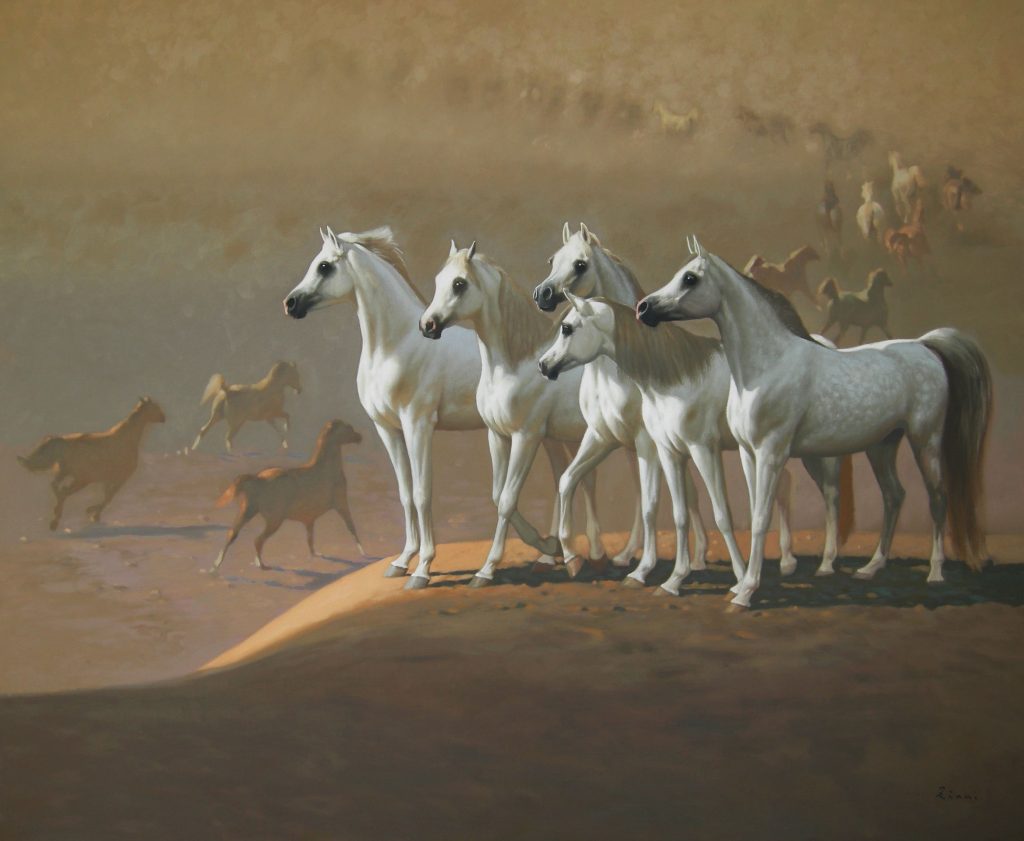
G.F.B: Is there a different specificity among fans of figurative art in the Arab world and those in the West? And if not, how are they different?
HZ: The difference lies in the cultural particularities of each of these two worlds. In the West, painting is an old tradition and a taste for art is cultivated from childhood, from primary school. Art is present everywhere, in many museums, churches, art fairs, official auction rooms and of course galleries. There are enough offers and demands. Quite simply, in the West, activity in the field of pictorial art is abundant and rich. This is not the case in the Arab world.
The latter is at its beginning. Let us not forget also that figuration has long suffered from some misinterpretations of the Muslim religion. However, in many Arab-Muslim countries, figuration is beginning to take its place so much better.
As for taste, to answer your question specifically, I would say that there are some notable differences between an Arab amateur and a Western amateur. As I said above, the differences are obviously cultural. The gaze of the West opens up to many aspects that a painting can carry. Its taste is therefore spiced with different pictorial genres, the history of art, past or current fashions and the different schools that have followed one another. The taste of the Western art lover has been sharpened by time and history. It is also open to the universal. For lovers of the Arab world, the taste is still sketched out and emerging. With the latter, the identity side often takes precedence over aesthetics. Because, he identifies with it above all. The example edifying is the important place orientalism has in the art market. Universal themes, even if they catch the eye of the Arab amateur, by their artistic quality, do not find a place in his home. However, there are some amateurs who collect art for the sake of art. But, these are rare.
G.F.B: The media have become a double-edged sword for all artists. How has the media machine influenced the course of your artistic career?
HZ: Not every artist, no matter how talented, ideally cannot have a professional career alone. The first key is to ally the services of a good promoter, a recognized art dealer working in a large capital city where art shines. Such partner is capable of making things happen around their artist. It is he who aims to showcase the art he presents and from which he takes advantage. The artist’s only vocation is to create his works. I remember my first meeting with my first Parisian gallery owner. It was in 1992. I had just arrived from Algiers and I did not know the art world, neither in Paris nor elsewhere in Europe. Before meeting the one who was to become my first gallery owner, I had made some contacts with about ten others. For ethical reasons, I had to choose only one gallery. So far, my prospecting for a few days had given me satisfaction, I can say that I was spoiled with choices. However, I was still undecided, because I did not know how to choose the right merchant, the right promoter. But when this professional gave me a relevant sentence, I thought it would be him and not someone else. He pulled this out for me: “Mr. Ziani, your concern should not extend beyond the perimeter of your web. The rest is up to me, I’ll take care of anything extra-artistic. My choice had just been made on the spot. I worked for several years with this excellent art dealer, who made me known in France, then in Europe. A few years later, we said our goodbyes amicably. However, we remained friends. In the meantime, I had known another gallery, on a different scale, which took my work to the world.
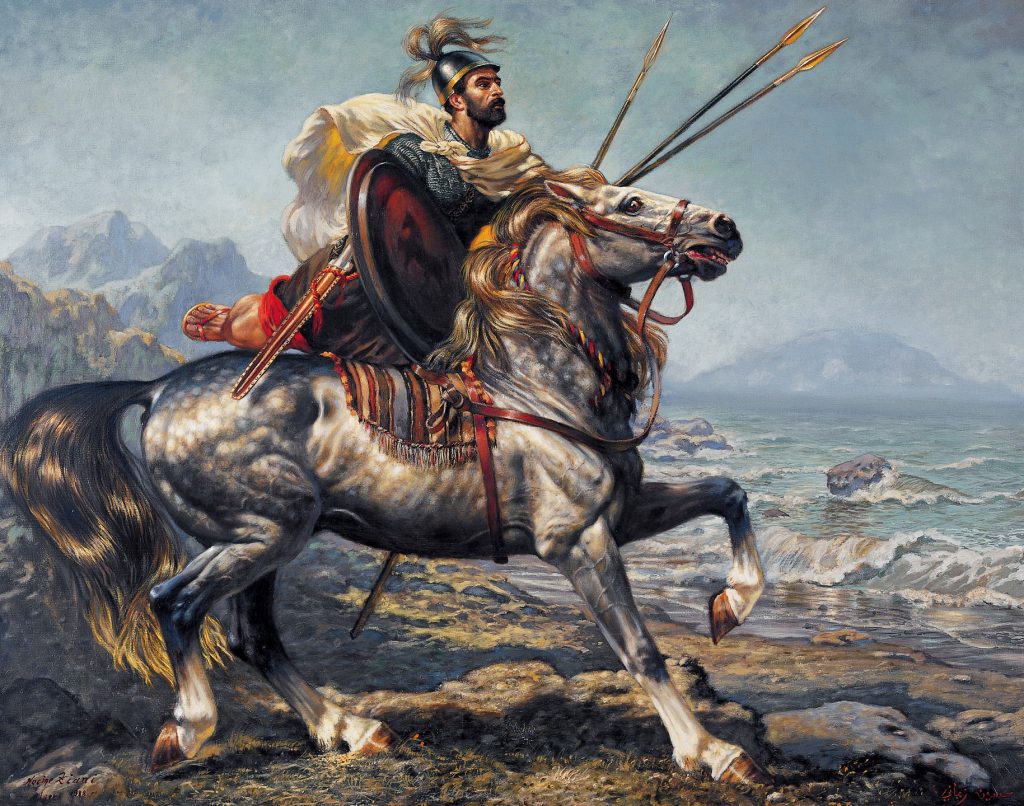
G.F.B: What do you get from the international titles and awards that you have obtained on a personal and professional level?
HZ: A self-taught artist has no diploma or benchmarks other than public recognition and awards given by institutions such as academies or salons of good reference. When he obtains official recognition, it reassures him and rewards him for the journey he has traveled alone.
G.F.B: Each successful walk is first exposed to obstacles and challenges such as “The stone that we throw on the tree, to bring down the fruit.” Which one characterizes you?
HZ: During my first steps as a professional artist, the first obstacle that arose in my path was the fact that figurative art was not in fashion, neither in Algeria nor elsewhere in the world. It was only later, after the economic crisis that followed the Gulf War, that this art regained its place in the art market. From then on, everything was going well for me. But the other big difficulty, which is sizeable, was the legal vacuum vis-à-vis the status of the Algerian artist. I worked as a professional, I had a clientele, I made a good living from my art, but I had no social protection in prospect. This anomaly eventually made me exile in Europe.
HOUCINE ZIANI
A self-taught artist has no diploma or benchmarks other than public recognition and awards given by institutions such as academies or salons of good reference.
